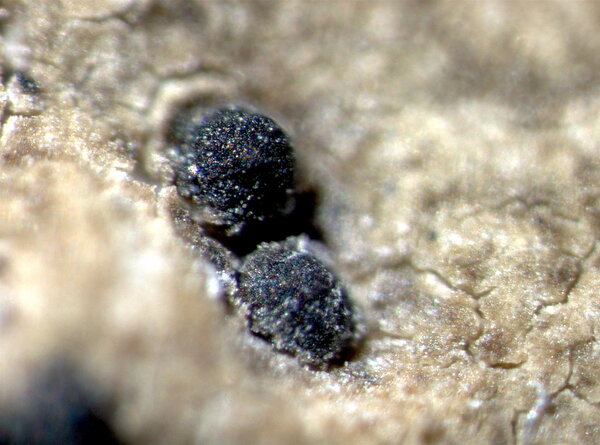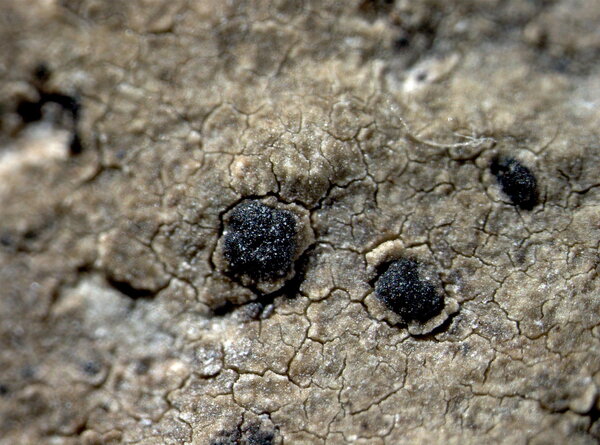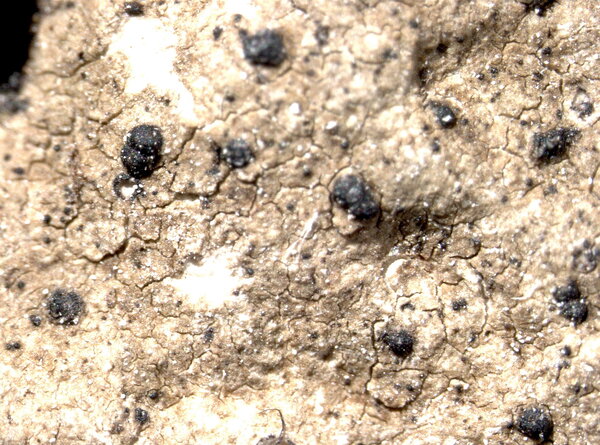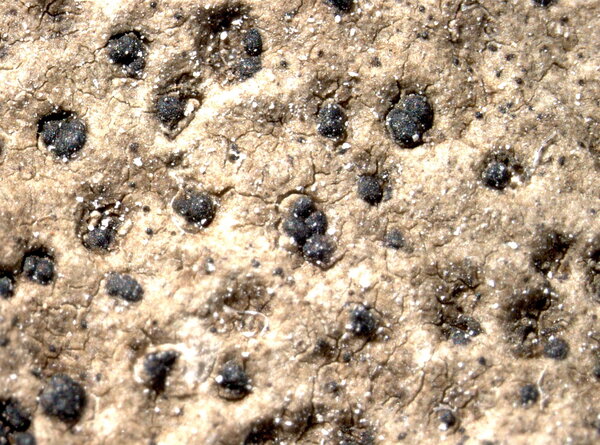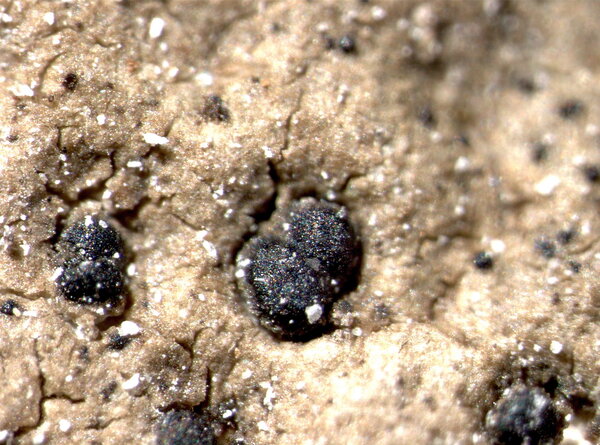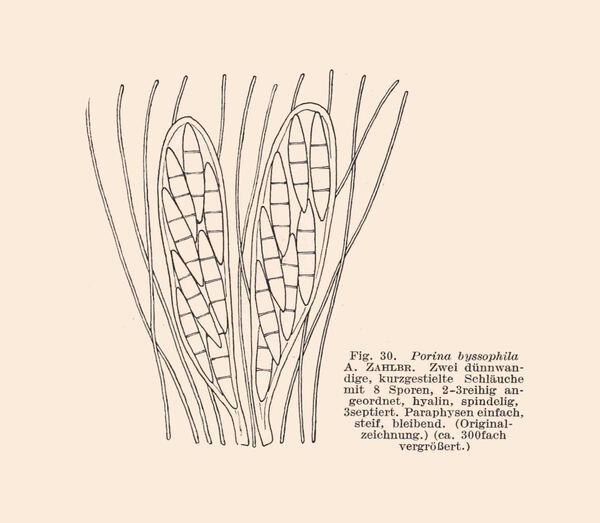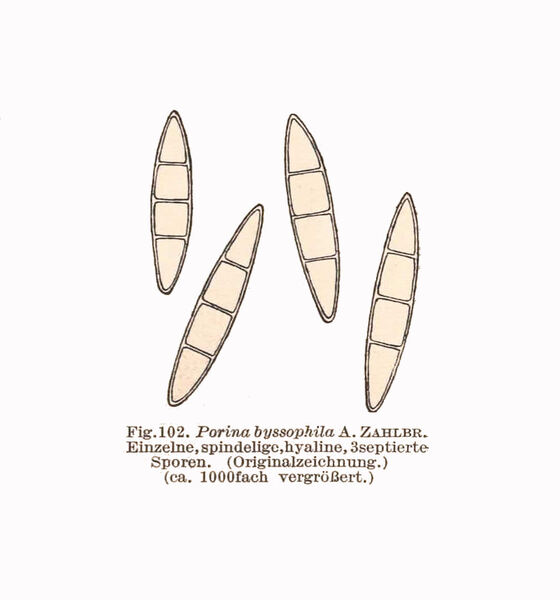Porina byssophila (Hepp) Zahlbr.
in Engler & Prantl, Nat. Pflanzenfam., 1: 66, 1903. Basionym: Sagedia byssophila Körb. ex Hepp - Flecht. Eur., 12: nr. 695, 1860.
Synonyms: Pseudosagedia byssophila (Hepp) Hafellner & Kalb; Spermatodium cinereorufescens Trevis.
Distribution: N - VG (Tretiach 2015u), Ven (Nascimbene & al. 2021), TAA (Nascimbene & al. 2022). S - Pugl (Nimis & Tretiach 1999), Bas (Bartoli & Puntillo 1998), Cal (Puntillo 1996), Si (Nimis & al. 1994, 1996b, Grillo & al. 2007).
Description: Thallus crustose, episubstratic, well-developed, grey-white, dull grey-green to orange-brown, smooth to uneven, continuous to cracked. Perithecia black, 0.1-0.3 mm across, immersed only at the base. Involucrellum of thick-walled, more or less elongated cells, purple-violet to purple-brown, K+ dark blue-grey to dull purplish-brown, HCl+ purplish-brown; exciple dark at least in upper part; hamathecium of simple or rarely branched paraphyses; hymenial gel I-, K/I-. Asci 8-spored, clavate-cylindrical, thin-walled, functionally unitunicate, I-, K/I-, the apex truncate and containing a refractive ring which stains with Congo Red. Ascospores (1-)3(-7)-septate, hyaline, narrowly ellipsoid, (17-)18-25(-29) x (3.5-)4-5.5(-6) μm. Pycnidia black. Conidia simple, oblong, 2.9-3.3 x c. 1.2 μm. Photobiont trentepohlioid. Spot tests: thallus K-, C-, KC-, P-, UV-. Chemistry: thallus without lichen substances.Note: a mild-temperate to humid subtropical species found on calcareous rocks in damp and shaded habitats, e.g. in forests; somehow rarer than the closely related P. linearis.
Growth form: Crustose
Substrata: rocks
Photobiont: Trentepohlia
Reproductive strategy: mainly sexual
Commonnes-rarity: (info)
Alpine belt: absent
Subalpine belt: absent
Oromediterranean belt: absent
Montane belt: absent
Submediterranean belt: very rare
Padanian area: absent
Humid submediterranean belt: rare
Humid mediterranean belt: very rare
Dry mediterranean belt: extremely rare
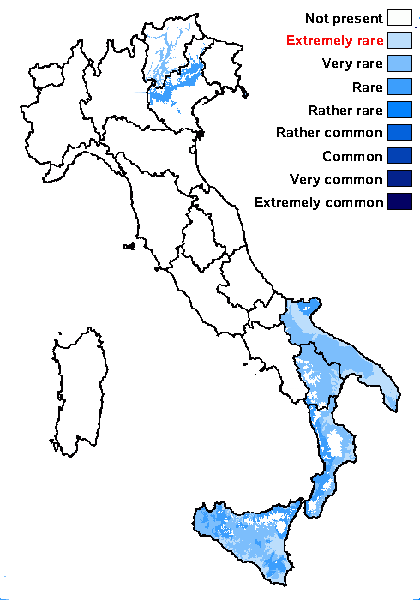
Predictive model
Herbarium samples
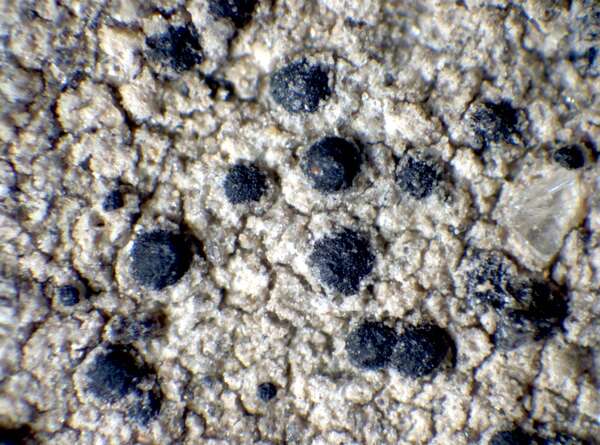

P.L. Nimis; Owner: Department of Life Sciences, University of Trieste
Herbarium: TSB (17216)
2001/11/29
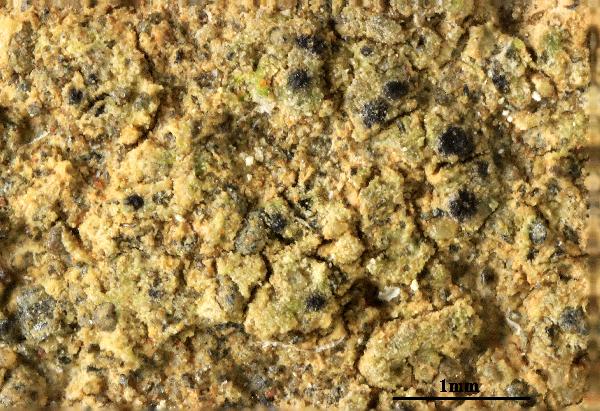

Felix Schumm - CC BY-SA 4.0
[VZR37], Italia. Pelagiae insulae: insula Linosa, in colle "Timpone", 30
m. Ad saxa mollia eruptiva. Leg. A. Puntillo & A. Vezda, 15.4.1992. EX
A. VEZDA: LICHENES RARIORES EXSICCATI NR. 37.
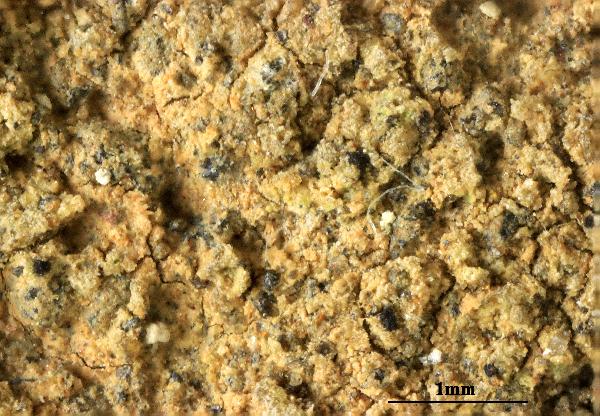

Felix Schumm - CC BY-SA 4.0
[VZR37], Italia. Pelagiae insulae: insula Linosa, in colle "Timpone", 30
m. Ad saxa mollia eruptiva. Leg. A. Puntillo & A. Vezda, 15.4.1992. EX
A. VEZDA: LICHENES RARIORES EXSICCATI NR. 37.
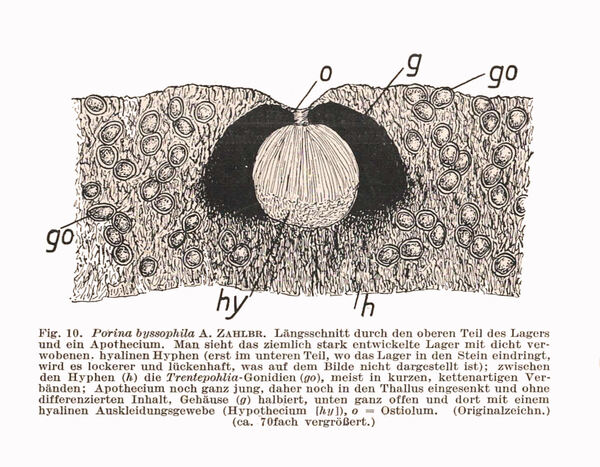
Source: Keissler K. von 1938. Pyrenulaceae, Mycoporaceae, Coniocarpineae. In: Rabenhorst G L: Kryptogamen-Flora von Deutschland, Österreich und der Schweiz. 2nd, IX, Die Flechten, Abt. 1, 2. Gebr. Borntraeger, Leipzig, pp. 1-846.
Growth form: Crustose
Substrata: rocks
Photobiont: Trentepohlia
Reproductive strategy: mainly sexual
Commonnes-rarity: (info)
Alpine belt: absent
Subalpine belt: absent
Oromediterranean belt: absent
Montane belt: absent
Submediterranean belt: very rare
Padanian area: absent
Humid submediterranean belt: rare
Humid mediterranean belt: very rare
Dry mediterranean belt: extremely rare

Predictive model
| Herbarium samples |


P.L. Nimis; Owner: Department of Life Sciences, University of Trieste
Herbarium: TSB (17216)
2001/11/29


Felix Schumm - CC BY-SA 4.0
[VZR37], Italia. Pelagiae insulae: insula Linosa, in colle "Timpone", 30 m. Ad saxa mollia eruptiva. Leg. A. Puntillo & A. Vezda, 15.4.1992. EX A. VEZDA: LICHENES RARIORES EXSICCATI NR. 37.


Felix Schumm - CC BY-SA 4.0
[VZR37], Italia. Pelagiae insulae: insula Linosa, in colle "Timpone", 30 m. Ad saxa mollia eruptiva. Leg. A. Puntillo & A. Vezda, 15.4.1992. EX A. VEZDA: LICHENES RARIORES EXSICCATI NR. 37.

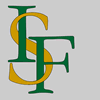 INDEX FUNGORUM
INDEX FUNGORUM
 GBIF
GBIF
 DOLICHENS
DOLICHENS
